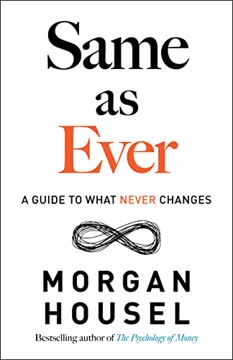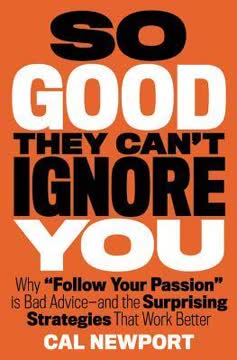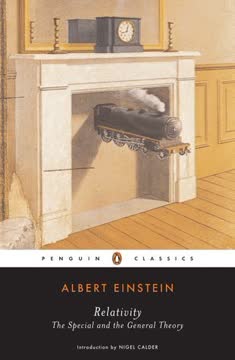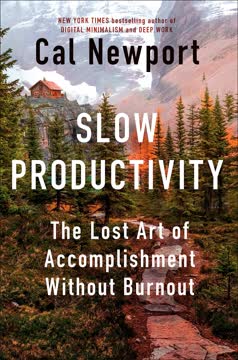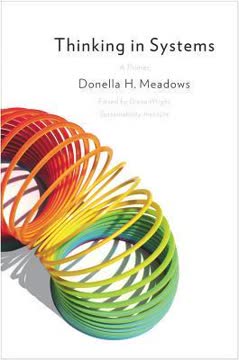重点摘要
1. 了解读者:有效写作的基础
你的成功取决于读者,因此要了解他们的需求。
了解你的受众。 有效的写作始于对读者的深刻理解。确定你的目标受众,并创建理想读者的详细档案。考虑他们的背景知识、动机以及对你观点的潜在抵触。
克服知识的诅咒。 作为专家,很容易忘记不懂你的主题是什么感觉。通过以下方法来应对:
- 定期与领域外的人交流
- 在非专家身上测试你的解释
- 想象自己在向一个完全的初学者解释这个话题
考虑读者的情境。 考虑:
- 他们能投入多少时间和注意力到你的写作中
- 他们在接触你的作品时的情绪状态
- 他们对这个话题已经知道(或认为知道)什么
2. 应对知识幻觉和受众抵触
我们通过不理解复杂性来容忍它。这就是理解的幻觉。
认识到知识幻觉。 人们常常高估自己对复杂话题的理解。这可能导致在面对挑战其信念的新信息时产生抵触。
克服抵触的策略:
- 在引入新观点之前,承认并验证现有信念
- 以能引起受众共鸣的价值观来框定信息
- 关注原因和后果,而不是抽象概念
- 用具体例子来说明抽象观点
巧妙地处理错误信息。 在面对误解时:
- 避免直接攻击信念
- 提供更有说服力的替代解释
- 使用可信的来源来支持你的论点
- 强调共同的目标和价值观
3. 激发读者的好奇心
我们对几乎完全了解或几乎一无所知的主题不太感兴趣。我们往往对已经知道不少但觉得还有更多可学的主题感兴趣。
找到好奇心的甜蜜点。 在熟悉和新颖之间找到平衡,以吸引读者的兴趣。通过将新信息与读者已经知道的内容联系起来来引入新知识。
激发好奇心的技巧:
- 提出引人入胜的问题
- 突出令人惊讶的事实或矛盾
- 创造读者想要填补的知识空白
- 用类比将不熟悉的概念与熟悉的事物联系起来
打造引人入胜的开头。 你的写作开头对于吸引注意力至关重要。考虑:
- 以生动的轶事开头
- 提出发人深省的问题
- 展示令人震惊的统计数据
- 做出挑战传统智慧的大胆声明
4. 掌握解释复杂概念的艺术
如果你希望人们能够集中注意力,不要从细节开始。先从关键思想开始,然后以层次化的方式围绕这些大概念形成细节。意义先于细节。
有效地结构化解释。 以逻辑、层次化的方式呈现信息:
- 从大局开始
- 引入关键概念
- 逐步添加支持细节
平衡抽象与具体。 在高层次概念和具体例子之间交替,以保持读者的参与和理解。
战略性地使用重复。 通过以下方式强化关键点:
- 以不同方式重述重要观点
- 使用总结部分或要点
- 结合视觉辅助或图表来说明概念
简化而不简化过度。 力求清晰而不牺牲准确性。将复杂的想法分解成易于理解的部分,但避免忽略重要的细微差别。
5. 利用故事和类比的力量
故事能同步我们的思维。
融入故事。 故事能激活大脑的多个区域,使信息更易记和更具关联性。用叙述来:
- 说明抽象概念
- 提供现实世界的背景
- 激发情感以强化你的信息
打造有效的类比。 精心选择的类比可以弥合熟悉与不熟悉之间的差距。在创建类比时:
- 确保比较对你的受众来说是熟悉的
- 突出相关的相似点
- 承认类比的局限性
平衡叙述和说明。 虽然故事很有力量,但不要完全依赖它们。将叙述与清晰的解释和分析结合起来,以提供对主题的全面理解。
6. 培养引人入胜的写作风格
你让读者更容易理解你的主题,他们就会认为你更聪明。
发展对话式的语气。 写作时就像在向朋友解释这个话题,但比随意的对话更精确和有结构。
避免行话和不必要的复杂性。 尽可能用简单的语言替代专业术语。当需要使用技术术语时,清楚地定义它们。
谨慎使用比喻语言。 隐喻和明喻可以阐明复杂的想法,但要谨慎选择,以避免混淆或意外的含义。
变换句子和段落的长度。 将简短有力的句子与较长的复杂句子混合使用,以保持读者的兴趣并为你的写作提供节奏。
7. 通过人性和谦逊建立可信度
可信度是由读者授予的,而不是由作者宣称的。要赢得它,而不是坚持它。
通过清晰的解释展示专业知识。 不要列出资历,而是通过使复杂话题变得易懂和引人入胜来证明你的知识。
分享个人经历。 适当的轶事可以使你的写作更具人性化,并与读者建立联系。要有选择性,确保故事直接支持你的主要观点。
承认局限性和不确定性。 承认你不知道的东西反而可以增加读者的信任。这表明了知识上的诚实和对准确性的承诺。
尊重你的读者。 避免居高临下或说教。将你的受众视为探索话题的智能伙伴。
8. 利用幽默来连接和启发
结合科学技能和同情心,幽默在医疗保健中提供了一种太有价值而不能忽视的人性化维度。
融入适当的幽默。 恰到好处的幽默可以:
- 在讨论严肃话题时缓解紧张
- 使抽象概念更具关联性
- 增加读者的参与度和记忆度
注重趣味,而不是强迫幽默。 追求轻松愉快的语调,而不是试图成为喜剧演员。微妙的文字游戏或有趣的类比通常比明显的笑话效果更好。
谨慎使用自嘲幽默。 自嘲可以使你更具亲和力,但要避免削弱你在该话题上的可信度。
平衡幽默与实质。 确保幽默是为了增强而不是分散你的主要观点。将其作为阐明观点的工具,而不是目的本身。
最后更新日期:
FAQ
What's "Writing to Be Understood" about?
- Purpose: "Writing to Be Understood" by Anne H. Janzer is a guide for nonfiction writers who aim to explain complex topics clearly and engagingly to a general audience.
- Focus: The book explores techniques and strategies that successful nonfiction writers use to connect with readers, such as storytelling, analogies, and tone.
- Structure: It is divided into three parts: understanding your readers, explaining complicated ideas, and avoiding boring writing.
- Goal: The ultimate goal is to help writers communicate effectively, ensuring their ideas are not only read but also understood and remembered.
Why should I read "Writing to Be Understood"?
- Improve Communication: If you're a nonfiction writer, this book offers practical advice on making your writing more accessible and engaging.
- Reader Connection: It provides insights into understanding your audience's needs and how to tailor your writing to meet those needs.
- Practical Techniques: The book is filled with actionable techniques, such as using analogies and stories, to make complex ideas more relatable.
- Broaden Impact: By applying the methods in the book, you can reach a wider audience and ensure your message is effectively communicated.
What are the key takeaways of "Writing to Be Understood"?
- Audience Understanding: Knowing your audience is crucial; tailor your writing to their knowledge level and interests.
- Clarity and Engagement: Use stories, analogies, and repetition to make complex ideas clear and engaging.
- Tone and Style: Adjust your writing style to convey the right tone, whether it's conversational, authoritative, or humorous.
- Humility and Humanity: Show vulnerability and respect for your readers to build trust and credibility.
How does Anne H. Janzer suggest understanding your readers?
- Identify Ideal Readers: Create detailed profiles of your target audience to guide your writing decisions.
- Empathy Development: Use cognitive empathy to understand your readers' perspectives and emotional contexts.
- Reader Context: Consider the reader's situation, such as their knowledge level and motivation for reading.
- Feedback and Interaction: Engage with real people to test your ideas and refine your understanding of your audience.
What methods does Anne H. Janzer recommend for explaining complicated ideas?
- Use of Analogies: Analogies help readers understand abstract concepts by relating them to familiar experiences.
- Storytelling: Stories make abstract ideas relatable and memorable by engaging multiple parts of the brain.
- Repetition: Reiterate key points in varied ways to reinforce understanding and retention.
- Concrete Examples: Balance abstract ideas with concrete details to reduce cognitive load and aid comprehension.
How can writers avoid being boring according to "Writing to Be Understood"?
- Tone and Style: Choose a tone that suits your audience and subject, and use a style that keeps readers engaged.
- Imagery and Metaphors: Use vivid imagery and metaphors to make your writing more interesting and relatable.
- Humor: Incorporate humor to lighten complex topics and make your writing more enjoyable.
- Personal Connection: Share personal anecdotes and show vulnerability to connect with readers on a human level.
What role does curiosity play in engaging readers, according to Anne H. Janzer?
- Curiosity as a Tool: Curiosity can be used to draw readers in by creating a knowledge gap they want to fill.
- Engaging Introductions: Start with intriguing questions or stories to pique readers' interest from the beginning.
- Balance of Known and Unknown: Find a sweet spot between what readers know and what they want to learn.
- Satisfying Curiosity: Ensure that the curiosity you spark is satisfied with clear and insightful explanations.
How does Anne H. Janzer define and use tone and style in writing?
- Voice vs. Tone: Voice is your unique way of expressing yourself, while tone is how the reader perceives your writing.
- Style Elements: Adjust paragraph length, sentence structure, point of view, and vocabulary to convey the desired tone.
- Conversational Writing: Aim for a conversational tone that is clear and engaging, not a direct transcription of speech.
- Avoiding Jargon: Minimize jargon to make your writing accessible and prevent alienating readers.
What are some effective repetition techniques in "Writing to Be Understood"?
- Rephrase Key Points: Reiterate important ideas using different words and contexts to reinforce understanding.
- Structural Repetition: Use titles, subtitles, and summaries to highlight and revisit key concepts.
- Value-Added Repetition: Add new insights or examples when repeating ideas to maintain reader interest.
- Learning and Memory: Recognize that repetition aids learning and helps readers retain information.
How does Anne H. Janzer suggest using humor in nonfiction writing?
- Engagement and Disarmament: Humor engages readers and makes complex topics more approachable.
- Self-Deprecating Humor: Use humor to show vulnerability and build a connection with readers.
- Balance and Appropriateness: Ensure humor serves the content and is appropriate for the audience and topic.
- Hope and Positivity: Combine humor with hope to leave readers with a positive impression.
What are the best quotes from "Writing to Be Understood" and what do they mean?
- "Your success depends on the reader, so understand their needs." This emphasizes the importance of audience awareness in effective writing.
- "Stories are not just stories; they are the best invention ever created for delivering mental models that drive behavior." This highlights the power of storytelling in shaping understanding and memory.
- "Credibility is granted by the reader, not asserted by the writer." This underscores the idea that trust and authority must be earned through clear and respectful communication.
- "The end of a laugh is followed by the start of a listen." This illustrates how humor can open readers up to new ideas and information.
How can writers find their personal style according to Anne H. Janzer?
- Experimentation: Try different techniques and methods to see what resonates with you and your audience.
- Balance and Adaptation: Find a balance between your natural voice and the needs of your readers.
- Feedback and Reflection: Use feedback from readers to refine your style and improve your writing.
- Continuous Learning: Keep exploring new ideas and methods to evolve your personal writing style over time.
评论
《写作以被理解》因其关于非虚构写作的实用建议而获得了压倒性的好评。读者们赞赏Janzer在如何吸引读者、解释复杂概念以及避免枯燥方面的见解。该书因其清晰的组织结构、对话式的语气以及来自各领域专家的宝贵建议而备受推崇。许多评论者认为这本书对新手和有经验的作家都很有帮助,特别强调了其对认知科学和读者心理的关注。一些批评者指出某些章节对高级作家来说可能过于基础,但总体而言,这本书被高度推荐给任何希望提高非虚构写作技能的人。
Similar Books

